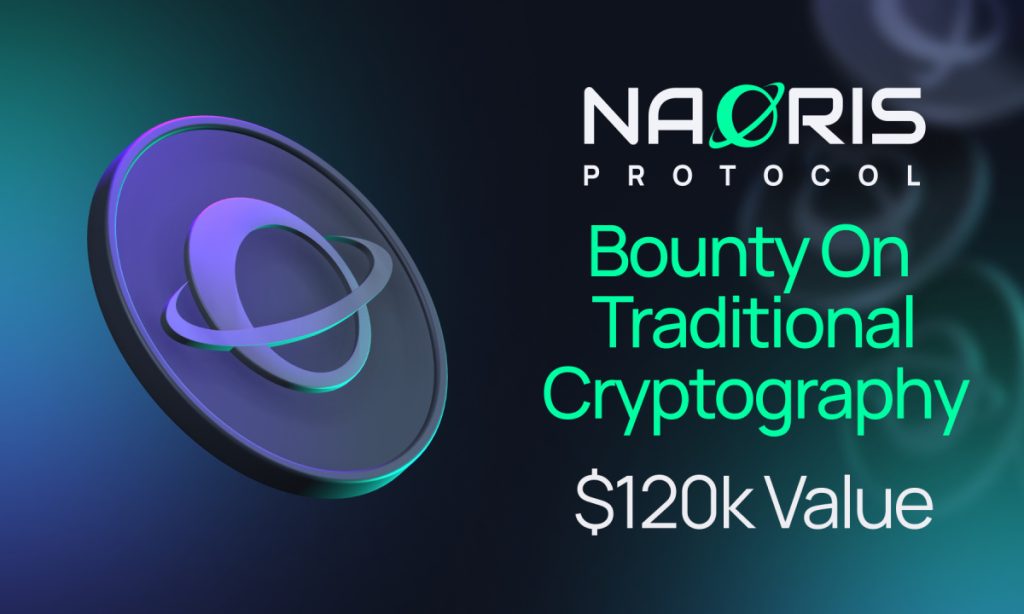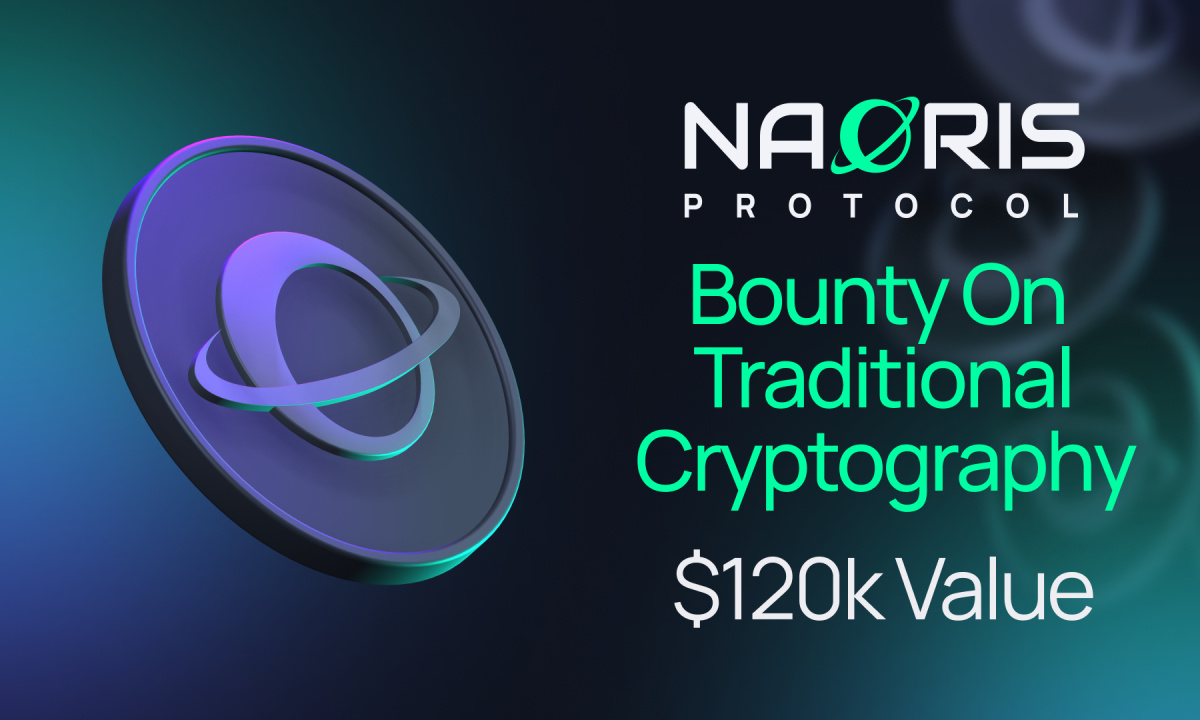
The Quantum Threat and Naoris Protocol’s Bold Initiative
Introduction: The Digital Security Crossroads
The digital world is at a critical juncture. As quantum computing advances, the cryptographic algorithms that secure our digital infrastructure face an existential threat. Naoris Protocol has taken a bold step to address this challenge with a $120,000 bug bounty program aimed at fortifying elliptic curve cryptography (ECC) against quantum attacks. This initiative is not just about finding vulnerabilities; it’s about ensuring the future of digital security.
The Quantum Computing Threat: A Growing Concern
Quantum computing, once a theoretical concept, is now a tangible reality. These powerful machines have the potential to break the encryption methods currently used to secure everything from bank accounts to cryptocurrency wallets. The most vulnerable among these is ECC, a widely used form of encryption. If ECC fails, the consequences could be catastrophic, potentially unraveling the fabric of digital security and trust.
Naoris Protocol’s Proactive Approach: A Call to Action
Naoris Protocol understands the urgency of the situation and is taking proactive steps to mitigate the quantum threat. Their $120,000 bug bounty program is a direct challenge to cryptographers worldwide, inviting them to put ECC to the test. By incentivizing researchers to find vulnerabilities, Naoris Protocol hopes to identify weaknesses and develop solutions before quantum computers become powerful enough to exploit them. This proactive approach is crucial for ensuring the long-term security and stability of the digital economy.
The Importance of Elliptic Curve Cryptography
Elliptic Curve Cryptography (ECC) is a type of public-key cryptography based on the algebraic structure of elliptic curves over finite fields. Its popularity stems from its ability to provide strong security with relatively small key sizes, making it efficient for resource-constrained environments like mobile devices and embedded systems. ECC is used extensively in various applications, including:
– Digital Signatures: Verifying the authenticity and integrity of digital documents and transactions.
– Key Exchange: Securely exchanging cryptographic keys between parties.
– Encryption: Protecting sensitive data from unauthorized access.
– Cryptocurrencies: Securing blockchain networks and digital wallets.
The widespread adoption of ECC makes it a critical component of the modern digital landscape. However, its vulnerability to quantum computers poses a significant risk to the security of countless systems and applications.
The Bug Bounty Program: A Deep Dive
Naoris Protocol’s $120,000 bug bounty program is a carefully designed initiative to thoroughly examine the strengths and weaknesses of ECC. The bounty is offered to anyone who can successfully break the elliptic curve algorithms currently used to secure the global digital economy. This involves:
– Identifying vulnerabilities: Discovering flaws in the implementation or design of ECC algorithms that could be exploited by attackers.
– Developing exploits: Creating working code that demonstrates how to break ECC encryption.
– Submitting detailed reports: Providing comprehensive documentation of the vulnerabilities and exploits discovered.
The program isn’t just about finding bugs; it’s about understanding the limits of current cryptographic methods and paving the way for more secure alternatives.
Post-Quantum DePIN Testnet: A Glimpse into the Future
Beyond the bug bounty program, Naoris Protocol is also pioneering a post-quantum Decentralized Physical Infrastructure Network (DePIN). This testnet, already boasting impressive early adoption with over 2.5 million transactions and 500,000 users in its first week, represents a significant step towards a future where digital infrastructure is inherently resistant to quantum attacks. The DePIN leverages decentralized cybersecurity principles to create a more robust and resilient network, ensuring that critical systems remain secure even in the face of advanced quantum computing capabilities.
Implications for Bitcoin and the Banking System
The potential consequences of a successful attack on ECC are far-reaching, particularly for Bitcoin and the global banking system. Bitcoin, with its $2.4 trillion market capitalization, relies heavily on ECC for securing transactions and maintaining the integrity of the blockchain. A quantum attack could compromise private keys, allowing attackers to steal funds and disrupt the network. Similarly, the $410 trillion global banking system depends on ECC to protect sensitive financial data and secure transactions. A successful attack could lead to massive financial losses, identity theft, and widespread economic instability.
Beyond the Bounty: A Holistic Approach to Security
While the bug bounty program is a critical component of Naoris Protocol’s strategy, it’s just one piece of the puzzle. The company is also focused on:
– Developing post-quantum cryptographic solutions: Creating new encryption algorithms that are resistant to attacks from both classical and quantum computers.
– Promoting standardization: Working with industry leaders and standards organizations to develop and implement post-quantum cryptographic standards.
– Educating the public: Raising awareness about the quantum threat and the importance of adopting post-quantum security measures.
– Building partnerships: Collaborating with other companies and research institutions to accelerate the development and deployment of post-quantum technologies.
Conclusion: Securing Tomorrow, Today
Naoris Protocol’s $120,000 bug bounty program is more than just a challenge; it’s a statement. It’s a declaration that the future of digital security demands proactive measures and innovative solutions. By confronting the quantum threat head-on, Naoris Protocol is not only safeguarding its own interests but also contributing to the security and stability of the entire digital ecosystem. As quantum computing continues to advance, initiatives like this will be crucial for ensuring that our digital world remains secure and trustworthy for generations to come. The race against the quantum threat is on, and Naoris Protocol is leading the charge.
A Quantum Leap for Security?
Ultimately, Naoris Protocol’s endeavors serve as a stark reminder that digital security is not a static concept, but rather a constantly evolving landscape. The emergence of quantum computing demands a paradigm shift in how we approach encryption and data protection. Whether Naoris Protocol’s specific approach proves to be the ultimate solution remains to be seen, but their proactive stance and commitment to innovation are undoubtedly essential for navigating the challenges of the post-quantum era. They are not just patching holes; they are building a new foundation, brick by encrypted brick.





